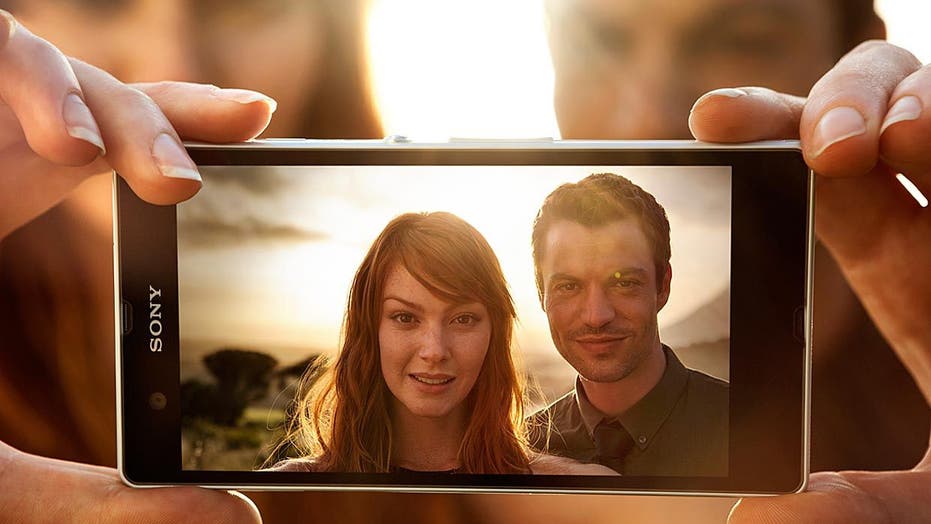Remember when the high-tech hype came from trade shows focused on consumer electronics and computers? Today, it's shifted to mobile phones and wireless devices, and Mobile World Congress currently underway in Barcelona.
And some of the most interesting new introductions are aimed not at well-heeled techno-geeks but at regular folks with budgets and responsibilities.
Just last year, analysts and reviewers were ridiculing the new wave of phablets or super phones being announced at the 2012 Mobile World Congress. Those are the oversized, big-screen smartphones that were even mocked on Nickelodeon's teen sitcom "iCarly." Samsung proved the critics wrong, ushering in an era of phones with 4.5-, 4.7-, and even 5-inch screens.
The company recognized that since we rarely use phones to make phone calls any more, larger screens are better for surfing the Web, posting to Facebook, and finding your way to the nearest Starbucks.
However, this year the big news is the fight not to be number one in the market or even number two. Google and Apple have already nailed down those positions. No, the battle over the next 12 months is going to be for the number three spot.
Blackberry has already announced its touch-screen BlackBerry Z10 model, which will launch in the U.S. in a few weeks. But while the company still has a foothold with some business users, the Z10 is expected to be priced at around $200, with a contract commitment. That's in the same pricing wheelhouse as high-end Android and iOS handsets; tough competition indeed. Those prices may also subvert BlackBerry's goals as other companies rush to cut prices.
For example, another former star of the cell phone galaxy, Nokia, is introducing an inexpensive Windows Phone 8 at the show. The snazzy Lumia 520 will cost roughly €140 in Europe, without any subsidies. So that means when it rolls out in the U.S. later this year on T-Mobile it will be probably be free -- with a contract, of course.
And then there's the Chinese firm Huawei, which is rolling out its own inexpensive Windows Phone 8 model, the Ascend W1. Priced at €120 without a contract, it will doubtless be subsidized as a free phone in the U.S. (The company will try to burnish its brand with a high-end model, too, that supports the LTE Cat 4 high-speed wireless standard with a theoretical download speed of 150Mbps -- depending on the network.)
Can you get cheaper than free? Maybe.
Web browser killer, Mozilla, announced in Barcelona that it will introduce a slew of Firefox OS-based handsets around the world this year. Firefox is already the number two browser behind Microsoft's Internet Explorer; now it's taking aim at the smartphone market.
In its announcement, Firefox said more than a dozen companies have promised to support the new OS, including Sprint Nextel in the U.S. and Deutsche Telekom, the parent company of T-Mobile USA. LG and Huawei plan to make Firefox OS phones, and an early Alcatel model looked sleek and simple. Companies like Twitter have already outlined their plans to make specific apps for the phone.
Mozilla is a non-profit company. And the apps for Firefox OS will be based on HTML 5, the Web language that promises to break open Apple's App store and enable a new generation of software. It could also mean lower costs for developers and the rapid introduction of supporting apps.
A non-profit company competing in the smartphone space?! After the Firefox announcement, I'm betting people at Microsoft were spewing a stream of expletives. How can they compete for the third spot against a(nother) company that essentially gives away its software for free. They must be thinking, "What kind of a &%#@ business is this?"
It's a mature business, that's what it is. That means Windows Phone 8 and BlackBerry 10 may be too late. There are already a billion smartphones in use around the world. The competition now is how to put the technology into the hands of the next billion users. Price is likely to be the major factor.
Some analysts may see this trend as a familiar phenomena in mature electronics and technology markets: the race toward the bottom. But that's a good thing for consumers. You'll no longer have to pony up hundreds of dollars for a smartphone that's obsolete in six months.
Now if only the major carriers would lower their prices, too.
Follow John R. Quain on Twitter @jqontech or find more tech coverage at J-Q.com.

